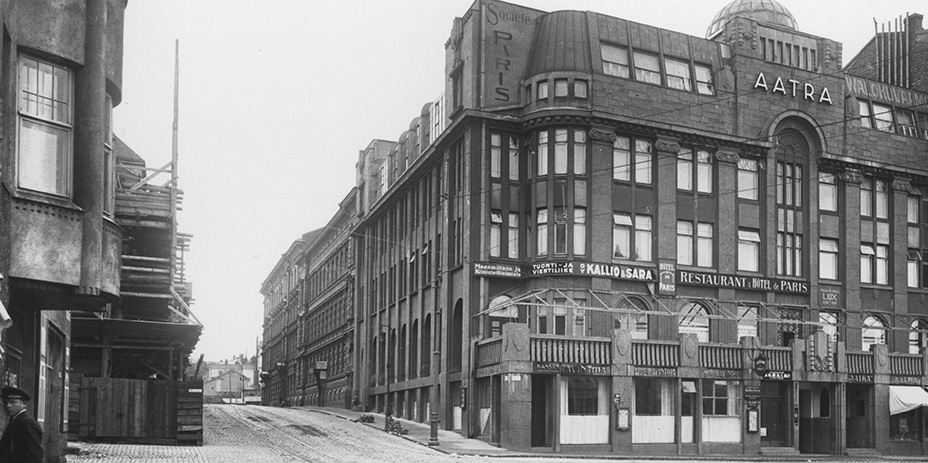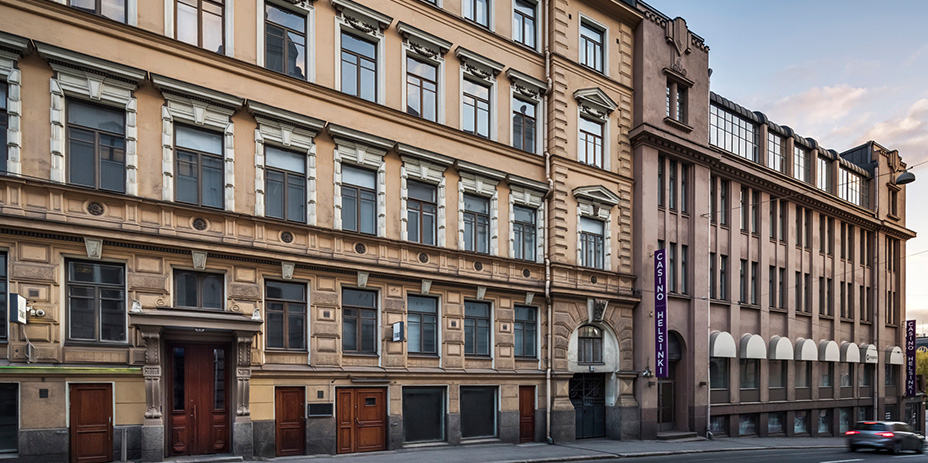
Decorative details at Vilhonkatu 6
On the corner of Vilhonkatu and Mikonkatu, next to Railway Square, stands one of the most magnificent historic buildings in Helsinki. This building with a rich history first saw the light of day as a three-storey residential building on Vilhonkatu 6.
Vilhonkatu 6 is part of the city’s multi-layered architectural heritage. Even though the building has undergone several changes and extensions over the decades, its historical features have been preserved.
From a wooden house to the head office of a limited liability company
The three-storey residential building designed by architect Theodor Höijer was completed on Vilhonkatu in 1888. The building’s wings on the yard side were raised in two stages: the first time was soon after the completion of the building in 1889, when a residential floor was added to the yard side. The second time was in 1930–1931, when the attic floor was expanded and central heating was installed in the building.
A new chapter in the building’s history began with Aatra, a major machinery retail company that also operated stores in other Finnish cities, including Tampere, Turku and Vyborg. As its operations grew, Aatra acquired a plot of land next to the Helsinki Railway Station and commissioned the construction of a five-storey commercial building on the Mikonkatu side of the plot, which was completed in 1912. This extension combined the existing building on the Vilhonkatu side of the plot to the new one functionally and architecturally.

Symmetry and style
Theodor Höijer (1843–1910) was a prominent Finnish architect whose design style combined historicism and neo-Renaissance. With its classic influences, decorative facades and symmetrical composition, the building at Vilhonkatu 6 is typical of Höijer’s design style. Ample decorative details, such as pilasters and balconies, were used on the building facades. Symmetry and balanced proportions were key design principles.
Höijer was influenced by Italian and German Renaissance architecture. The house at Vilhonkatu 6 has clear classic elements, such as a structured stone façade and decorative window frames. The details of the façade have been preserved in their original form, accentuating the historical value of the building.
Many significant buildings in Helsinki are Höijer’s handiwork, including the Ateneum Art Museum and the Erottaja Rescue Station. Vilhonkatu 6 is a fine example of Höijer’s design style, combining historical value and timeless elegance.
Part of Helsinki’s cityscape and history
Originally built as a residential property, Vilhonkatu 6 has been converted to commercial and office use over time. For example, in 1995, Bio City, a four-screen cinema, opened on the second floor of the building and operated there until 2006. Today, the premises are part of Casino Helsinki.
Although decades have passed, the magnificent building on Vilhonkatu has retained its unique appearance and atmosphere. The premises have been renovated over the years and some of the spaces retain original elements, such as gorgeous old tiled stoves. The building is known as part of Helsinki’s vibrant business centre, and its historical features offer an interesting glimpse of the city’s development.

